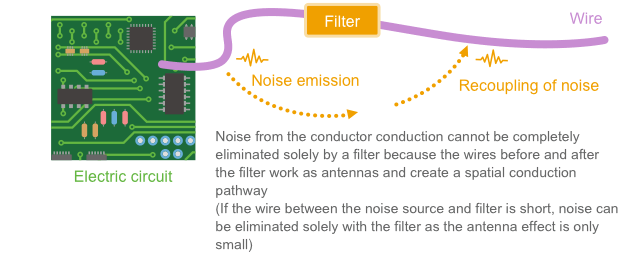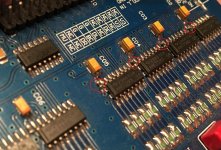Mshow DSC1 DAC decoder DSD Assembled Compatible with Amanero and our XMOS usb | eBay
Unbalanced, close to MIska's original design but they changed the muting circuit and maybe other small details.
I cannot comment on the transformer question. There are plenty of ways to convert balanced signals to unbalanced - the Twisted Pear Balsie module is simple, effective and provides good output drive for instance, at the expense of more complication.
If you order the DSC Balanced kit let us know how you get on with it.
Unbalanced, close to MIska's original design but they changed the muting circuit and maybe other small details.
I cannot comment on the transformer question. There are plenty of ways to convert balanced signals to unbalanced - the Twisted Pear Balsie module is simple, effective and provides good output drive for instance, at the expense of more complication.
If you order the DSC Balanced kit let us know how you get on with it.
BUT suffers a certain background noise that is audible in quiet patches.
Perhaps noise are coming from the logic gate. I might try to put a ferrite bead after each resistor. There are various beads from Murata. I think it worth a try.
Perhaps noise are coming from the logic gate. I might try to put a ferrite bead after each resistor. There are various beads from Murata. I think it worth a try.
Interesting remark!
I will follow closely the idea.
I already did this with a сhinese non-balanced board. The problem of noise has remained.Perhaps noise are coming from the logic gate. I might try to put a ferrite bead after each resistor. There are various beads from Murata. I think it worth a try.
Attachments
Last edited:
Some informations interesting to think about some ways to improve electronics from murata site.

Wire could be considered like a noise source of spatial conduction.
Transformer is also considered like a similar case.
Some feature about sowter transformer :
Mumetal core for minimal harmonic distortion. Internal electrostatic shield for high common mode noise rejection. Mumetal can for magnetic shielding.
i think mumetal shield is an other step to upgrade transformer.

Wire could be considered like a noise source of spatial conduction.
Transformer is also considered like a similar case.
Some feature about sowter transformer :
Mumetal core for minimal harmonic distortion. Internal electrostatic shield for high common mode noise rejection. Mumetal can for magnetic shielding.
i think mumetal shield is an other step to upgrade transformer.
An externally hosted image should be here but it was not working when we last tested it.
I have to buy an unbalanced version of DSC1-DAC because the seller was ran out of balanced board, very sad
What I did here is I soldered all components but not IV stage, and take the signal out before IV stage for measurement.
I measured output without playing dsd file; that noise is coming from computer via usb power supply through Amanero board.

I don't think I will finish iv stage of dsc1 dac because it's confirmed that there are noises while playing dsd file. So do you know any iv converter that is good enough for this dac (the signal very small 0,2mVpp with impedance change from 470 ohm to 15K ohm)? Or can I use transformer for isolating high frequency noises, if yes, what is the ratio of that transformer 1:1, 1:5 or other?
Thank you for your patience in reading my issues!
What I did here is I soldered all components but not IV stage, and take the signal out before IV stage for measurement.
I measured output without playing dsd file; that noise is coming from computer via usb power supply through Amanero board.

I don't think I will finish iv stage of dsc1 dac because it's confirmed that there are noises while playing dsd file. So do you know any iv converter that is good enough for this dac (the signal very small 0,2mVpp with impedance change from 470 ohm to 15K ohm)? Or can I use transformer for isolating high frequency noises, if yes, what is the ratio of that transformer 1:1, 1:5 or other?
Thank you for your patience in reading my issues!
There is a standard i/v converter ad844. That 's work well for it.
Take a look Squarewaves from DACs - Miska's Blog - Computer Audiophile
Sowter 3575 in 1:1 is adapted to DSC1 for example.
Take a look Squarewaves from DACs - Miska's Blog - Computer Audiophile
Sowter 3575 in 1:1 is adapted to DSC1 for example.
I measured output without playing dsd file; that noise is coming from computer via usb power supply through Amanero board.
Power the Amanero with a better power supply and use it with an isolator;
Free Amanero Isolator bare PCB Twin pack - DIYINHK
or even better use an isolator/reclocker like the TP Hermes/Cronus.
Alternatively, there are USB boards that include isolation and reclocking, such as the JLSounds I2SoverUSB product.
I already did this with a сhinese non-balanced board. The problem of noise has remained.
It looks like the beads are on the VCC side. I'd place them after Q0~Q7 for each ACHT595.
found this on a japanese site.
The seller will not sell outside of Japan.
I used an agent to buy one on my behalf but it gets expensive with their fees.
They use flip flops and different resistor values
Yes, you can use other weightings than unity weighting used on DSC1 to gain different filtering characteristics. But it increases jitter sensitivity to some extent. So it is always trade-off between different attributes. With discrete resistors you can experiement with different weightings. I used resistor networks so it is not possible with my board, reason why I chose network is both size and the properties. Since most of the networks are designed to be used as bus termination networks, they have somewhat favorable switching characteristics. SMD networks would be better than the through-hole ones I used. I just wanted to use as few SMD components as possible.
AFAIK, most DAC chips use unity weighted elements.
I already did this with a сhinese non-balanced board. The problem of noise has remained.
Is it possible that noise is coming from many shift registers switching in the same time ? Do you have any capture of this noise on oscilloscope ?
This noise is not permanent. It's hard to see with an oscilloscope. The noise is similar to the correlation, it appears on quiet levels of music. The higher the DSD frequency, the more noise. I digitized for example a quiet section of music from the DSD256 in wav. https://yadi.sk/d/_AiM2Z3x3R8tiPDo you have any capture of this noise on oscilloscope ?
I digitized for example a quiet section of music from the DSD256 in wav. Yandex.Disk
What is the music?
Listening via my laptop and some cheap headphones that I have to hand I don't hear any noise, just music. I'll copy the wav file across to the main audio system and have another listen later...
Last edited:
Yes, you can use other weightings than unity weighting used on DSC1 to gain different filtering characteristics. But it increases jitter sensitivity to some extent. So it is always trade-off between different attributes. With discrete resistors you can experiement with different weightings. I used resistor networks so it is not possible with my board, reason why I chose network is both size and the properties. Since most of the networks are designed to be used as bus termination networks, they have somewhat favorable switching characteristics. SMD networks would be better than the through-hole ones I used. I just wanted to use as few SMD components as possible.
AFAIK, most DAC chips use unity weighted elements.
Yes you are correct WRT unity weighted elements. A good example is Sabre DACs.
I have a question for you Miska - would it not be better to use differential OP flip flops for a balanced design?
I'm wondering if the bulk of non linearities are due to inherent non RTZ nature of DSD stream. As such I would think the fastest dif OP logic would give best results. Something like 16 x Potato 74G74 dual FF should work well.
Otherwise is it possible to integrate RTZ coding?
Terry
- Home
- Source & Line
- Digital Line Level
- Signalyst DSC1
